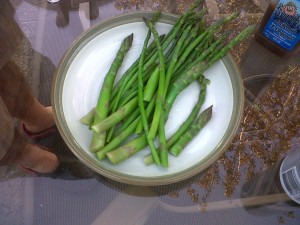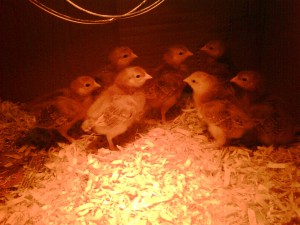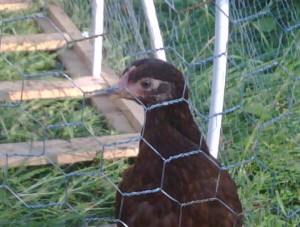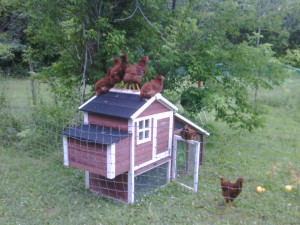Worm composting made easy
/About a year ago a friend of mine asked if I would like to start a worm compost (vermicompost) in my basement. At first I was reluctant because… worms in my basement. But since I am an avid vegetable gardener who uses compost, the idea of making it myself was appealing. Worm composting is not nearly as difficult or time consuming as one may think – and the result… well, just wait until you see this year’s seedlings!
What is vermicomposting?
In it’s simplest form, vermicomposting or worm composting, transforms food waste into nutrient-rich compost using worms (in particular, red wigglers).
How to get started with worm composting
First things first:
1) No. Worm composting does not smell.
2) No. You do not have to touch the worms if you do not want to.
Here is what we used to kick start my indoor worm compost:
1. Container: Doreen started me off with a plastic container that was about eight inches high. She had drilled holes in the bottom for ventilation and raised the bin on bricks to let excess liquid run out. She then put a tray underneath to capture the liquid, which you can use for fertilizer (think of it as high octane fertilizer!). The container also had a tight lid to not only keep light out, but also keep the worms in.
top half of compost bin with screened breathing wholes
2. Bedding: We then filled the bin three-quarters full with finely shredded newspaper, broken up eggshells and a bit of soil. We then moistened this with a bit of water and mixed it all up loosely to allow for good air flow.
3. Worms: Doreen then dumped in about a pound of red wriggler worms. Red wrigglers are low maintenance forgiving and like to eat! So, no, you do not use earthworms for composting purposes.
4. Where to keep your worm bin: I keep my bin in my unfinished basement, where it is cool, not cold and not too warm either. It is also not in direct sunlight (worms hate direct light).
My counter compost container (it has an air tight lid)
5. Feeding and caring for your worms: I keep a compost container on my kitchen counter (as well as a larger one under my sink). When it is full, I “feed it to the worms,” which is about once a week. I simply go down, open the lid, pick a corner, dig a little hole, dump the food waste, cover it up and go. Admittedly, I also love looking around to see how the worms are doing. I look for eggs (they’re usually in avocado shells) and worm clusters (this way I can tell what they really like to eat). Note: I leave a little marker of some kind (a lid or something small) that I place on top of the corner that is next for me to put food in. This way the food is evenly distributed.
If the bin starts to give off an unpleasant odour or if your worms are trying to escape (you will see lots on the lid), the bedding may be too wet. Stop feeding them until the worms catch up and gently stir the contents to increase airflow.
Worms working hard to break down waste; you can still see some of the original paper in here
Weeks later the compost is looking good!
6. When and how to use your compost: In a couple of months you will start to see all the paper and dirt turn into compost. It’s quite miraculous, really. You can then mix your worm compost with potting soil for potted plants, add it to your garden soil, and use it when transplanting seedling from indoors to outdoors for a little extra nutrients to ease the stress of the climate change.
I now have both an indoor and outdoor worm compost. I upgraded my indoor worm compost to a “Worm Factory” because my worms outgrew my starter bin, and my husband built our outside worm compost. I dump food in our outdoor worm compost all year long (of course, it doesn’t break down in the winter, but come spring – it breaks down really fast!). And no, our outdoor compost bin does not smell! The worms do a great job of breaking down the enzymes responsible for odours and if it does start to smell, I just go in with a pitch fork and mix up the compost to allow for more air to get in.
worm factory
Can I move my outdoor worms inside and vice versa?
Yes, when it is time to bring your worms inside, you can spread out the compost on a tarp on a sunny day and move it around until you see the worms scramble to find darkness. Take those worms and put them in an inside worm compost (you can start your indoor compost again, starting with step one). We did this last fall when it was time for our indoor worms that we put outside for the summer to come back inside. This year I think we will continue to have an outdoor and indoor compost.
Worm composting at home is just as fun and educational. A part of my daughter’s chores involves feeding the worms and giving me a status check, which is usually a “they’re fine” or “one was on the lid, but I just put it back in.” She has also learned the ins and outs of composting – a skill I hope she will come to appreciate as an adult.
If you’re not convinced that vermiculture is for you, just remember that worm composting reduces your garbage and your reliance on city composting. There is also something gratifying about managing your own organic waste, making your own compost and watching your worms grow and multiply. Honestly though – it’s fun!

















